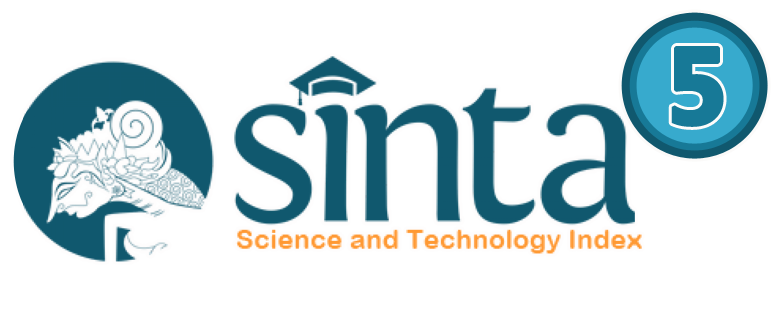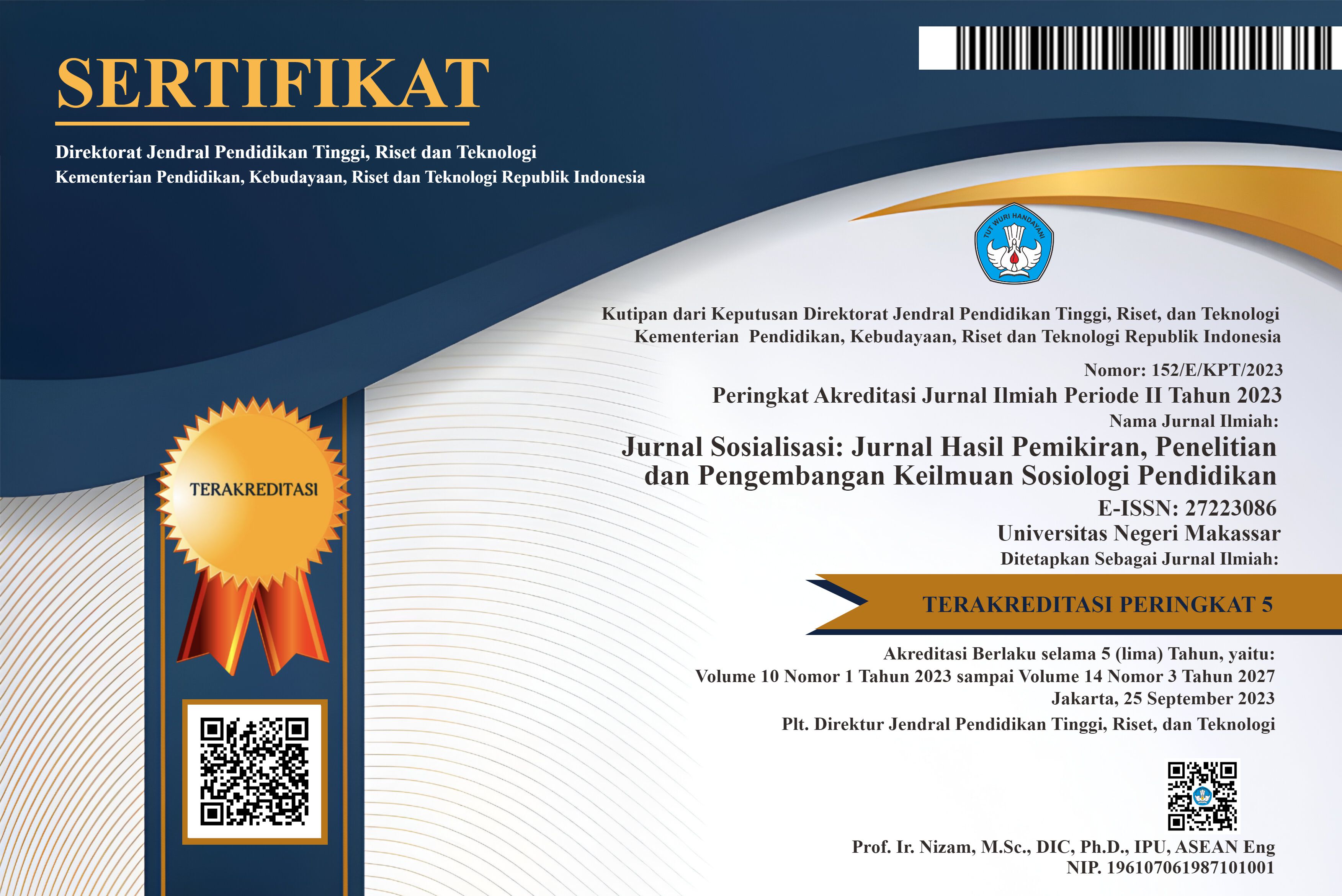Proses Komunikasi Simbolik Adat Mas Kawin Di Kampung Wayori Distrik Supiori Barat Kabupaten Supiori
(1) Institut Ilmu Sosial Dan Ilmu Politik IISIP Yapis Biak
(2) Institut Ilmu Sosial Dan Ilmu Politik IISIP Yapis Biak
(*) Corresponding Author
DOI: https://doi.org/10.26858/sosialisasi.v1i1.23905
Abstract
Humans as social beings cannot live alone, humans are social creatures who in their daily life always need communication or interaction, since humans have lived in the world for centuries, they must have communicated symbolically, until the time when humans have entered the digital era. which in this era is marked by communication through advanced technology, so that the interaction symbols are increasingly diverse and are applied in the form of emoticons. Verbal communication is communication that uses oral and written, communication that uses words in both oral and written form. Talking face to face, talking using a cellphone is verbal communication while non-verbal is communication through automatic body movements and gestures. Communication that takes place in a reciprocal face-to-face dialogue interpersonal order is called symbolic interaction, interaction is a sociological term while symbolic is a communication term or communication science. The interaction process that is formed involves the use of language symbols, provisions of customs, religion and other views. This research method is descriptive qualitative where interviews are conducted on selected informants because they are considered credible in terms of the information we can get. The research location is in Wayori Village, Supiori Barat District, Supiori Regency. The results of this study indicate that the Supiori community is the dominant community in using oral communication, they are very very good at telling stories, but have a bit of difficulty in using writing as a communication product, so it is difficult to find stories. - stories in written form as historical relics.
Keywords
Full Text:
PDFReferences
Darmabrata, W., & Sjarif, S. A. (2004). Hukum Perkawinan dan Keluarga di Indonesia. Jakarta:Badan Penerbitan fakultas Hukum Universitas Indonesia.
Effendy, O. (2008). Dinamika Komunikasi. Bandung: Remaja Rosdakarya.
Gerungan, W. . (2004). Psikologi Sosial. Bandung: PT. Refika Aditama.
Kamus Besar bahasa Indonesia. (2000). Kam. Jakarta: Balai Pustaka.
Lusting, M. ., & Koester, J. (1993). Intercultural Competence: Interpersonal Communication Across Cultures. New York: Addison Wesley Longman, Inc.
Miles, M. ., Heburman, A. ., & Saldana, J. (2014). Qualitative Data Analysis, A Methods Sourcebook (Edition 3). USA : Sage Publications. Terjemahan Tjetjep Rohindi Rohidi, UI-Press.
Muhammad, B. (1981). Asas-Asas Hukum Adat (Suatu Pengantar). Jakarta: Pradaya Paramitha.
Mulyana, D. (2005). Ilmu Komunikasi Suatu Pengantar. Bandung: PT Remaja Rosdakarya.
Ramulyo, M. . (1996). Hukum Perkawinan Islam. Jakarta: Bumi Aksara.
Sastrodihardjo, S. (1998). Hukum Adat Dan Realitas Kehidupan. Fakultas Hukum Universitas Islam Indonesia.
Sugiyono. (2012). Memahami Penelitian Kualitatif.
Sugiyono. (2015). Metode Penelitian Kombinasi (Mix Methods). Bandung: Alfabeta.
Walgito, B. (2003). Pengantar Psikologi Umum. Yogyakarta: ANDI.
Article Metrics
Abstract view : 106 times | PDF view : 31 timesRefbacks
- There are currently no refbacks.

This work is licensed under a Creative Commons Attribution 4.0 International License.


































